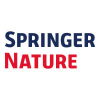Imt 07-2024 Master Thesis: Next-generation - Karlsruhe, Deutschland - Springer Nature
Beschreibung
IMT Master Thesis:
Next-generation spectral-splitting hybrid solar photovoltaic-thermal t
:
- Employer
- Helmholtz Association of German Research Centres
- Location
- Karlsruhe
- Closing date 7 Apr 2024
- Discipline
Job Type
Researcher
Employment - Hours
Full time
Duration
Fixed term
Qualification
PhD
Sector
Academia- You need to sign in or create an account to a job.
- Job Details
- Company
Job Details:
Area of research:
Diploma & Master Thesis
Starting date:
Job description:
Solar energy is one of the most abundant renewable energy sources, and effective solar technologies have a great potential to alleviate the grand challenges of satisfying rising energy demands, while reducing the associated emissions.
The current commercial photovoltaic (PV) panels can convert 15-20% of the solar energy to electricity, while the rest is dissipated as waste heat in PV panels.
Spectral splitting hybrid solar photovoltaic-thermal (PVT) technology is capable of utilizing the full solar spectrum to simultaneously generate electricity and high-temperature thermal energy, potentially boosting the overall efficiency to 60-70%.
It relies on the fact that a PV cell is only effective within a specific spectral range, e.g., nm for Si cells.
As shown in the figure, spectral splitting design approaches spectrally separate the solar spectrum into different parts, only one of which is directed to the PV cell for electricity generation.
The rest of the spectrum, which is not able to be electrically utilized by the cell, is sent to a separate solar thermal absorber for thermal energy generation, thus avoiding the unnecessary heating of the cell.
Spectral-splitting PVT collectors typically employ additional selectively reflective (i.e., a dichroic mirror made of nanofilm layers) or selectively absorptive (i.e., nanofluids) optical filters to split the solar spectrum.
However, both nanofluid and nanofilm optical filters are still facing challenges of significant optical loss, leading to a significant decrease (~50%) in PV efficiency.
Overcoming the challenge requires transformative step-changes beyond the state-of-the-art.- This research center is part of the Helmholtz Association of German Research Centers. With more than 42,000 employees and an annual budget of over € 5 billion, the Helmholtz Association is Germany's largest scientific organisation._
Company:
The Helmholtz Association contributes to solving major challenges to assure the future of our society.
With more than 39,000 people on staff in 18 national research centres, the Helmholtz Association is Germany's largest scientific organization.
The name Helmholtz stands for concerted research in which networks form the key principle behind inquiring thought and action. Concerted research is efficient and flexible.The profile of the Helmholtz Association
The Helmholtz Association performs cutting-edge research which contributes substantially to solving the grand challenges of science, society and industry.
To succeed in meeting these responsibilities, Helmholtz concentrates its work in six research fields:
Energy, Earth and Environment, Health, Key Technologies, Matter, as well as Aeronautics, Space and Transport. Within each of these fields, research programs are developed by our scientists and regularly evaluated by renowned international experts. Their evaluation forms the basis for the programme-oriented funding that is allocated to Helmholtz research.
Within the six research fields, Helmholtz scientists cooperate with each other and with external partners - working across disciplinary, organizational and national borders.
Promoting young academics
Helmholtz scientists, a high-performance infrastructure and modern and efficient research management are the ingredients to the Helmholtz Association's success and global impact.
Its strategy begins with targeted recruitment of highly qualified staff at all levels, followed by comprehensive support aimed at further developing their potential.
Ensuring equal opportunities is an essential element in all talent management activities undertaken by the Helmholtz Association.The Helmholtz Graduate Schools and
Research Schools at almost all Helmholtz Centres provide doctoral students with the general and specific skills and training they need, as well as ample opportunity to network with other working groups. The period following a doctorate is decisive in determining the direction and success of a scientific career. For this reason, we are about to establish Career Centers for postdoctoral researche
Mehr Jobs von Springer Nature
-
Postdoc Mechanical Engineering
Karlsruhe, Deutschland - vor 3 Wochen
-
Redakteurin (M/w/d) Mit Schwerpunkt Digitale Medien
Berlin, Deutschland - vor 2 Tagen
-
Doctoral Student
Berlin, Deutschland - vor 2 Tagen
-
Accelerator Physicist
Berlin, Deutschland - vor 3 Wochen
-
Professorship (W2) for Informatics with Focus On
Hamburg, Deutschland - vor 2 Wochen
-
Master Thesis: Inline Quantification of
Karlsruhe, Deutschland - vor 3 Wochen

